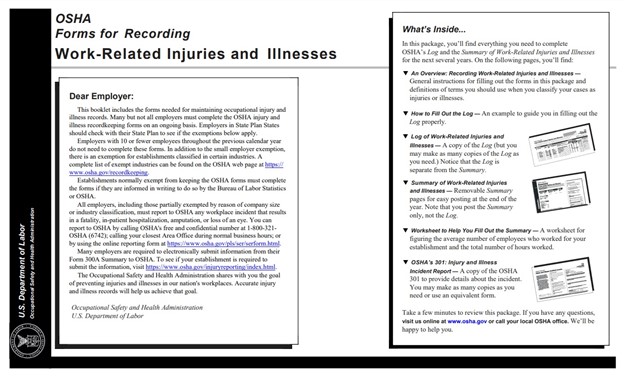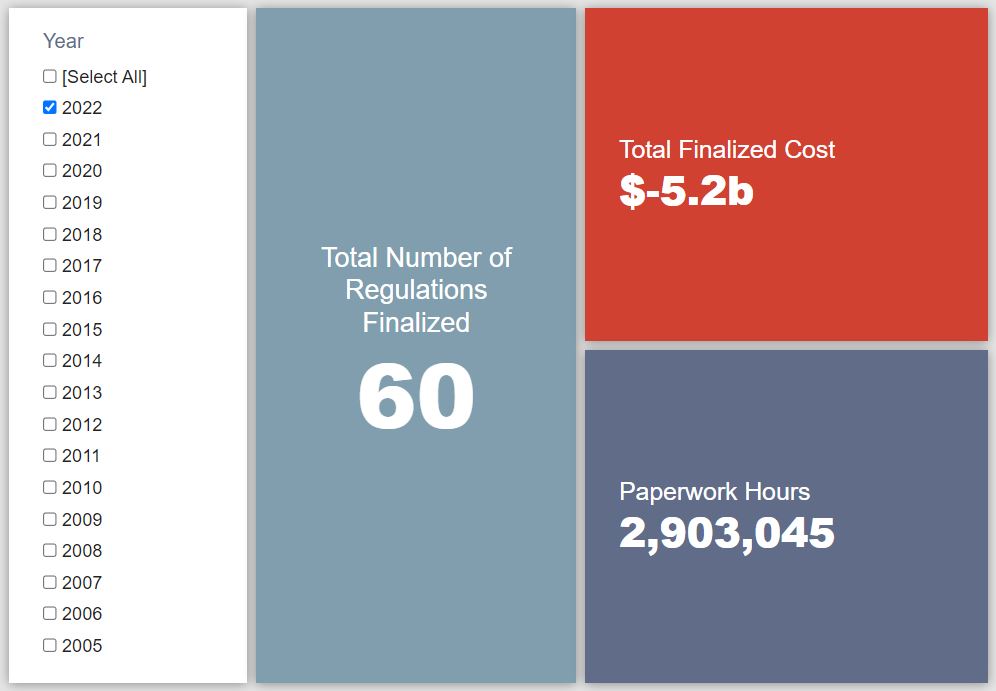Week in Regulation
April 4, 2022
March-to-April Turn Brings Massive Week
With the calendar now in a new month, last week saw, by far, the most regulatory activity of any previous week in 2022 in terms of both volume and effect. There were 17 rulemakings with some measurable economic impact. This haul of regulatory actions also included the latest rulemaking to claim the honor of being, at least for now, the most economically significant rulemaking of 2022. Across all rulemakings, agencies published $22.9 billion in total net costs and added 973,663 annual paperwork burden hours.
REGULATORY TOPLINES
- Proposed Rules: 50
- Final Rules: 57
- 2022 Total Pages: 19,336
- 2022 Final Rule Costs: -$5.2 billion
- 2022 Proposed Rule Costs: $32.1 billion
NOTABLE REGULATORY ACTIONS
The most significant rule of the week – and of 2022 thus far – was the Environmental Protection Agency’s (EPA) latest proposed rule regarding “Control of Air Pollution From New Motor Vehicles: Heavy-Duty Engine and Vehicle Standards.” An examination of the rulemaking’s particular items can be found here. For those who follow vehicle emission standard rulemakings closely, it will come as little surprise that this proposal has potential cost impacts in the billions of dollars. While the rulemaking’s analysis includes a wide range of cost-benefit estimates, for the purposes of RegRodeo, the present value cost through 2045 at a 7 percent discount rate totals $19 billion, making it the most significant rulemaking to hit the Federal Register this year. For reference, the second most significant rulemaking in terms of costs or savings so far in 2022 had only $5.3 billion in economic impact.
TRACKING THE ADMINISTRATIONS
As we have already seen from executive orders and memos, the Biden Administration will surely provide plenty of contrasts with the Trump Administration on the regulatory front. And while there is a general expectation that the new administration will seek to broadly restore Obama-esque regulatory actions, there will also be areas where it charts its own course. Since the American Action Forum (AAF) RegRodeo data extend back to 2005, it is possible to provide weekly updates on how the top-level trends of President Biden’s regulatory record track with those of his two most recent predecessors. The following table provides the cumulative totals of final rules containing some quantified economic impact from each administration through this point in their respective terms.
![]()
For the first time in a while, the Biden final rule tally saw a significant shift with $799 million in net cost reductions. The main reason for this was a Department of Transportation rule regarding “Occupant Protection for Vehicles With Automated Driving Systems [ADS].” The rule “will eliminate the need for ADS-equipped-vehicle manufacturers to equip vehicles with redundant manual driving controls in vehicles that do not have manual driving capabilities,” and thus, as more of such vehicles come online, will provide covered manufacturers $900 million in net cost savings due to the ability to forgo installing such features.
The other notable shifts across the covered administrations came from the Obama-era cost and paperwork totals, increasing by $873 million and 1.8 million hours respectively. The cost figure increase was largely the result of a rule involving “Electronic Prescriptions for Controlled Substances.” Paperwork surged primarily from an EPA rule regarding the Renewable Fuel Standard.
THIS WEEK’S REGULATORY PICTURE
This week, the Occupational Safety and Health Administration (OSHA) revamps an Obama-era reporting requirement scaled back by the Trump Administration.

On March 30, OSHA published a proposed rule in the Federal Register titled “Improve Tracking of Workplace Injuries and Illnesses.” Devoted workplace safety regulation enthusiasts may find the title familiar – this is the third consecutive administration to publish a similarly titled rule.
The rule was first published by the Obama Administration in 2016. It modified OSHA’s workplace injury and illness report regulations to require certain companies to submit data from three longstanding OSHA forms to OSHA electronically. OSHA’s goal was to establish a publicly available database that would include establishment-specific injury data. OSHA believed the data would improve its own enforcement and injury-mitigation efforts, and would also benefit researchers, consumer groups, and customers. Critics countered that the specificity of the data without proper context could lead users to draw erroneous conclusions regarding a company’s safety program.
The Trump Administration dialed back the requirement (and removed the word “Improve” from the title) in 2019 and limited the electronic reporting to just one form, a summary without potentially identifying information about the people involved in a workplace injury or illness. The information remained establishment-specific, however. The move was justified on the basis that removing identifying information was too costly to the agency and that the “risk to worker privacy outweighs the data’s uncertain incremental benefits to enforcement.”
The Biden Administration’s OSHA is now proposing to extend the electronic reporting requirement back to the original three forms and to employers in certain industries with 100 or more employees, rather the Obama-era 250 or more employees. The Biden Administration has dismissed the Trump Administration’s justification as “no longer compelling.” OSHA now says that “improved technology used to protect sensitive employee data will reduce costs and resource-allocation issues for OSHA by eliminating the need to manually identify and remove information that reasonably identifies individuals directly from submitted data.”
OSHA estimates the rule will cost the private sector about $3.9 million per year for 10 years.
TOTAL BURDENS
Since January 1, the federal government has published $26.8 billion in total net costs (with $5.2 billion in new cost savings from finalized rules) and 19.8 million hours of net annual paperwork burden increases (with 2.9 million hours in increases from final rules).












